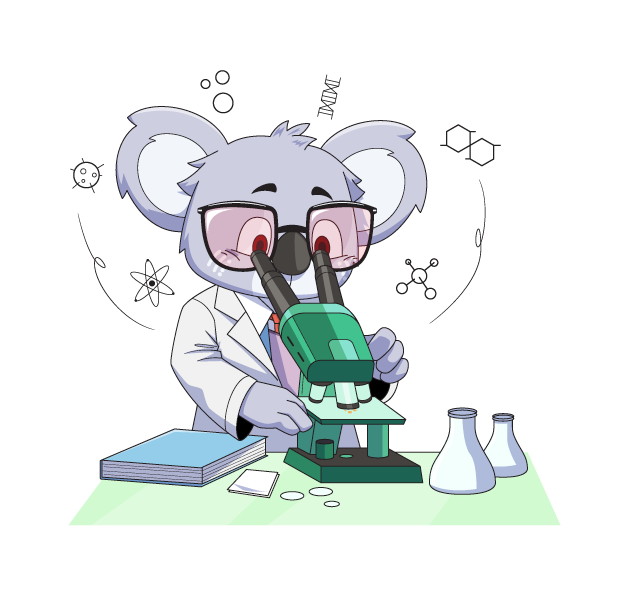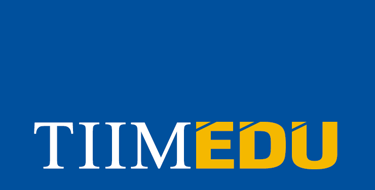NextGen Olympiad Science Online Exam
Kỳ thi Khoa Học Trực tuyến NextGen Olympiad


Khám phá Khoa học cùng NextGen Olympiad
NextGen Olympiad Science Online Exam là sân chơi quốc tế dành cho những bộ óc trẻ đam mê khoa học. Dựa trên tiêu chuẩn chương trình học Úc, kỳ thi mang đến cơ hội để học sinh toàn cầu thử thách kiến thức, rèn luyện tư duy phản biện, đồng thời kết nối với bạn bè khắp thế giới.
Kỳ thi không chỉ kiểm tra kiến thức, mà còn khơi dậy sự tò mò, khả năng phân tích và tinh thần khám phá – những yếu tố then chốt của một công dân toàn cầu trong thế kỷ 21.
Hình thức bài thi
25 câu hỏi trắc nghiệm được thiết kế phù hợp độ tuổi
60 phút làm bài
Nội dung bám sát chương trình học Úc
Giám sát trực tuyến an toàn và minh bạch
Đề thi online sẽ được mở trong suốt 24 tiếng, thí sinh có thể làm bài bất kỳ khi nào thuận tiện
Cách tính điểm
Mỗi câu đúng: +4 điểm
Mỗi 3 câu sai sẽ trừ 1 câu đúng
Điểm tối đa: 100 điểm
Cơ hội vòng Global Round tại Sydney
Top 60% thí sinh đạt điểm cao nhất sẽ giành vé tham dự Global Round tháng 4/2026 tại Sydney, Úc – nơi hội tụ trí tuệ, văn hóa và những trải nghiệm học thuật quốc tế đáng nhớ.

Ai được tham gia NextGen Science?
Science Online Exam – Juniors
Dành cho học sinh tiểu học, bài thi tập trung vào việc khơi gợi trí tò mò khoa học và tư duy nền tảng:
Category 1: 6–7 tuổi (Lớp 1–2)
Category 2: 8–9 tuổi (Lớp 3–4)
Category 3: 10–11 tuổi (Lớp 5–6)
👉 Nội dung bao gồm: Sinh học cơ bản, Hóa học đơn giản, Vật lý nhập môn, Khoa học Trái Đất.
Science Online Exam – Seniors
Dành cho học sinh trung học, với thử thách học thuật sâu hơn và yêu cầu tư duy logic, phân tích:
Category 4: 12–13 tuổi (Lớp 7–8)
Category 5: 14–15 tuổi (Lớp 9–10)
Category 6: 16–17 tuổi (Lớp 11–12)
👉 Nội dung bao gồm: Sinh học, Hóa học, Vật lý, và Khoa học Trái Đất với mức độ nâng cao hơn, khuyến khích học sinh vận dụng kỹ năng giải quyết vấn đề và tư duy phản biện.

Đăng ký dự thi NextGen Science
Đăng ký dự thi NextGen Science theo cá nhân
Đăng ký dự thi NextGen Science theo đơn vị trường
Ngôn ngữ và nội dung thi NextGen Science
Ngôn ngữ thi: Một ngôn ngữ duy nhất là Tiếng Anh.
Nội dung thi:
Grade 1-2 (Level 1)
Living and Non-living Things – identifying characteristics of plants, animals, and objects
Basic Needs of Living Things – food, water, shelter, and air
Life Cycles – simple stages of plants (seed to plant) and animals (egg to adult)
Everyday Materials and Their Properties – wood, metal, plastic, fabric, glass
Changes in Materials – bending, melting, freezing, mixing
Weather and Seasons – daily weather changes and seasonal patterns
The Sun, Moon, and Earth – day/night and simple moon observations
Forces and Motion – push, pull, roll, slide, and how things move
Light and Sound – sources of light, how sound is made and heard
Observing and Comparing – using senses to describe and sort objects
Simple Experiments and Predictions – asking "what will happen if…?" and testing ideas
Uses of Science in Daily Life – examples in homes, schools, and communities
Grade 3-4 (Level 2)
Living Things and Their Environments – grouping organisms, structural features, and adaptations for survival
Life Cycles and Reproduction – stages in the life cycles of plants and animals, including pollination and seed dispersal
Interactions in Ecosystems – simple food chains, predator–prey relationships, and effects of environmental changes
Properties of Materials – natural and processed materials, their uses, and how properties influence choice
Changes to Materials – reversible (melting, freezing) and irreversible changes (burning, rusting)
Water Cycle and Earth's Surface – key processes: evaporation, condensation, precipitation, movement of water through landscape and sky
Earth's Resources – renewable and non-renewable resources, sustainable use of water, soil, and energy
Weather, Climate, and Earth's Surface – measuring weather, seasonal changes, and features of the Earth's surface
The Sun, Moon, Earth, and Planets – Earth's rotation, phases of the moon, and introduction to the solar system
Forces and Motion – contact and non-contact forces (push, pull, gravity, magnetism)
Energy Sources and Transfers – heat, light, and sound energy; how they can be produced and transferred
Grade 5-6 (Level 3)
Adaptations and Classification – structural and behavioural adaptations of living things; classifying plants, animals, vertebrates, and invertebrates
Life Cycles and Ecosystem Interactions – complete and incomplete life cycles, food webs, and environmental change impacts
Properties and States of Matter – solids, liquids, gases, and how their properties determine uses
Changes to Materials – reversible (melting, freezing, evaporating) and irreversible (burning, rusting) changes; introduction to mixtures and separation methods
Earth's Resources and Sustainability – renewable vs. non-renewable resources, sustainable use of water, soil, minerals, and energy
Earth and Space – Earth's position in the solar system, day/night, seasons, phases of the moon, and planetary orbits
Water Cycle and Earth's Surface – evaporation, condensation, precipitation
Natural Processes and Events – weathering, erosion, earthquakes, and their effects on landscapes
Light – shadows, reflection, and refraction of light
Forces and Motion – contact and non-contact forces (gravity, friction, magnetism) and their effects on movement
Scientific Measurement & Data Handling – units of measure, accuracy, repeatability, error checking, recording in tables and graphs
Energy Forms and Transfers – light, sound, heat, and electrical energy; how energy is produced, transformed, and transferred
Simple Electrical Circuits – components, flow of current, and safety considerations
Grade 7-8 (Senior Level 1)
Cells & Microscopy – cell structure and function (plant & animal cells), use of microscopes, unicellular vs. multicellular organisms
Body Systems & Interactions – circulatory, respiratory, digestive, excretory, nervous systems; how they work together
Reproduction in Plants & Animals – sexual and asexual reproduction, pollination, fertilisation, development
Ecosystems & Interdependence – food webs, energy flow, matter cycling, human impacts, and biodiversity conservation
Classification & Evolution – grouping organisms based on features, introduction to evolution and natural selection
States of Matter & Particle Model – solids, liquids, gases, particle movement, changes of state
Mixtures, Elements & Compounds – separation techniques, properties of substances, metals/non-metals/metalloids
Atomic Structure & Periodic Table – protons, neutrons, electrons, atomic number/mass, arrangement in the periodic table, simple chemical symbols and formulas
Chemical Reactions – signs of chemical change, word equations, combustion, acid–base, corrosion, and rates of reaction (intro)
Forces & Motion – balanced/unbalanced forces, Newton's laws (intro), speed, acceleration, and motion graphs
Energy Forms & Transformations – kinetic, potential, heat, light, sound, electrical; energy transfer and conservation
Simple Machines & Mechanical Advantage – levers, pulleys, gears, inclined planes
Earth Structure & Geological Time – layers of the Earth, plate tectonics, rock cycle, weathering, erosion
Natural Hazards & Earth Processes – earthquakes, volcanoes, tsunamis, climate patterns
Water Cycle & Weather Systems – evaporation, condensation, rainfall, air pressure, ocean currents, climate change (intro)
Space Science – solar system, orbits, seasons, eclipses, lunar phases, relative sizes/distances, gravity in space, stars and galaxies (intro)
Scientific Measurement & Data Analysis – metric units, accuracy, precision, repeatability, graphing, identifying trends and anomalies
Grade 9-10 (Senior Level 2)
Biological Sciences
Cell Structure and Function – specialised cell organelles, cell theory, and microscopy
Body Systems and Interdependence – coordination of systems (nervous, endocrine, circulatory, respiratory, reproductive)
Ecosystem Interactions – energy flow, trophic levels, food webs, biodiversity, human impact
Heredity and Genetics – DNA structure, genes, chromosomes, patterns of inheritance
Evolution and Natural Selection – evidence, adaptation, and speciation processes
Disease and Immunity – infectious vs. non-infectious diseases, immune responses
Chemical Sciences
Atomic Structure & Periodic Table – subatomic particles, isotopes, electron shells, periodic trends, groups & periods
Chemical Bonding & Reactions – ionic, covalent, metallic bonding; balancing equations; reaction types (acid–base, combustion, precipitation, redox)
Conservation of Mass & Stoichiometry – mass relationships in chemical equations, mole concept (intro)
Acids, Bases & pH – properties, indicators, neutralisation, common uses
Rates of Reaction & Energy Changes – temperature, concentration, catalysts; endothermic & exothermic reactions
Earth & Space Sciences
Solar System and Beyond – planets, moons, asteroids, comets, relative distances
Earth's Systems – lithosphere, hydrosphere, atmosphere, biosphere interactions
Plate Tectonics and Geological Processes – continental drift, earthquakes, volcanoes
Rock Cycle and Minerals – igneous, sedimentary, metamorphic processes
Climate Change and Human Impact – greenhouse effect, carbon cycle, sustainability
Astronomy – life cycle of stars, galaxies, universe expansion, Big Bang theory
Physical Sciences
Forces & Motion – Newton's laws, momentum, acceleration, mass vs. weight, motion graphs
Energy Transfer & Transformations – mechanical, thermal, electrical, electromagnetic; conservation of energy
Waves & Electromagnetic Spectrum – wave properties, sound, light, reflection/refraction, radio to gamma rays
Electricity & Magnetism – current, voltage, resistance, Ohm's law, circuits, electromagnets, motors, generators
Nuclear Science – radioactivity, half-life, nuclear energy, safety
Grade 11-12 (Senior Level 3)
Biology (Biological Sciences)
Cell Biology & Biochemistry – cell structure, microscopy, biochemical processes, photosynthesis, respiration
Genetics & Molecular Biology – DNA structure, replication, protein synthesis, genetic technologies
Inheritance Patterns & Population Genetics – Mendelian and non-Mendelian inheritance, population variation
Evolution & Biodiversity – mechanisms of evolution, speciation, adaptive radiation, conservation biology
Ecology & Ecosystem Dynamics – ecosystem function, trophic levels, biogeochemical cycles, human impacts
Human Physiology & Regulation – homeostasis, organ systems (nervous, endocrine, circulatory, immune), disease response
Biotechnological Applications & Ethics – genetic engineering, cloning, CRISPR, ethical considerations
Chemistry (Chemical Sciences)
Atomic & Electronic Structure – atomic models, electron configuration, periodic properties
Bonding & Structure – ionic, covalent, metallic bonds, molecular shapes, intermolecular forces
Stoichiometry & Chemical Calculations – moles, mass relationships, limiting reagents, solution concentration
Rates, Equilibrium & Thermodynamics – reaction rates, collision theory, Le Châtelier's Principle, energy changes
Acids, Bases & pH – acid–base strength, pH calculations, buffer systems, titration curves
Redox & Electrochemistry – redox reactions, electrochemical cells, electrolysis, standard potentials
Organic Chemistry – functional groups (alkanes, alkenes, alcohols), polymer chemistry, organic reactions
Analytical Techniques – chromatography, spectroscopy (UV-Vis, NMR), qualitative and quantitative analysis
Physics (Physical Sciences)
Mechanics – kinematics, dynamics, Newton's laws, momentum, energy transformations
Thermodynamics – heat transfer, specific and latent heat, laws of thermodynamics, engines
Waves & Optics – wave properties, interference, diffraction, reflection, refraction, lenses, optical devices
Electricity & Magnetism – electric fields, circuits, Ohm's Law, magnetism, electromagnetic induction, transformers
Modern Physics – quantum principles, photoelectric effect, wave–particle duality, atomic models, radioactivity, nuclear reactions
Earth & Environmental Science
Earth System Science & Plate Tectonics – Earth's layers, plate boundaries, continental drift, mountain formation
Geological Time & Earth Materials – rock cycle, mineral resources, fossil record, absolute/relative dating
Atmosphere & Climate – climate zones, greenhouse effect, climate change, weather systems, human impact
Hydrosphere & Biogeochemical Cycles – water balance, global hydrologic cycle, carbon and nitrogen cycles
Resource Management & Sustainability – renewable vs. non-renewable resources, environmental management, conservation

Các vòng thi NextGen Science
Kỳ thi Khoa Học Trực tuyến NextGen Olympiad có 2 vòng thi:
✅ Vòng Online Exam thi ngày 14/11/2025
✅ Vòng Global Round thi trực tiếp tại Sydney, Úc vào tháng 4/2026
Mốc thời gian
VÒNG ONLINE EXAM
VÒNG GLOBAL ROUND
Hạn đăng ký và hoàn thành lệ phí
Thứ Sáu, 31/10/2025
Ngày thi
14/11/2025
Hình thức thi
Thi trực tuyến online có giám sát. Đề thi online sẽ được mở trong suốt 24 tiếng, thí sinh có thể làm bài bất kỳ khi nào thuận tiện. Lưu ý thời gian làm bài thi là 60 phút.
Lệ phí thi
25 USD/thí sinh
Đặc biệt ưu đãi: Thí sinh đăng ký và hoàn thành lệ phí trước ngày 20/10/2025 được trợ giá 10USD, chỉ còn 15 USD/thí sinh.
Đăng ký
Tất cả học sinh khối lớp 1 đến khối lớp 12 đăng ký tại link bên dưới
Hạn đăng ký và hoàn thành lệ phí
31/01/2026
Ngày thi
13-16/04/2026
Hình thức thi
Thi trực tiếp tại Sydney, Úc
Lệ phí thi
Gói cơ bản: 700 USD/thí sinh
Gói 04 ngày: 1,400 USD/thí sinh
Gói 09 ngày: 2,400 USD/thí sinh
Đăng ký
Cơ hội chỉ dành cho 60% thí sinh xuất sắc nhất vượt qua Vòng Online.


Giải thưởng Vòng Thi Online Quốc Tế
Hình thức xét giải
Xét ở cấp độ toàn cầu
Xét theo từng level
Cơ cấu giải thưởng từng level
🥇 Giải Vàng: 300 USD + Huy chương + Chứng nhận bản cứng
🥈 Giải Bạc: 200 USD + Huy chương + Chứng nhận bản cứng
🥉 Giải Đồng: 150 USD + Huy chương + Chứng nhận bản cứng
Chứng nhận tham gia
Top 60%: Nhận chứng nhận bản cứng và thư mời tham dự Vòng Chung kết Toàn cầu.
Các thí sinh còn lại: Nhận chứng nhận tham gia bản mềm.

Đăng ký dự thi NextGen Science
Đăng ký dự thi NextGen Science theo cá nhân
Đăng ký dự thi NextGen Science theo đơn vị trường
Câu hỏi thường gặp (FAQ) – Kỳ thi Khoa Học Trực tuyến NextGen Olympiad
1. Kỳ thi Science Online Exam dành cho những độ tuổi nào?
Kỳ thi chia thành 6 nhóm độ tuổi:
Junior: 6–7 tuổi (Lớp 1–2), 8–9 tuổi (Lớp 3–4), 10–11 tuổi (Lớp 5–6)
Senior: 12–13 tuổi (Lớp 7–8), 14–15 tuổi (Lớp 9–10), 16–17 tuổi (Lớp 11–12)
2. Nội dung bài thi bao gồm những kiến thức khoa học nào?
Bài thi bao quát kiến thức về Sinh học, Hóa học, Vật lý và Khoa học Trái Đất. Cấp độ Junior tập trung khái niệm nền tảng và ứng dụng đơn giản; cấp độ Senior đi sâu vào tư duy phân tích, logic và các chủ đề nâng cao.
3. Cấu trúc bài thi ra sao?
25 câu hỏi trắc nghiệm
60 phút làm bài
Bám sát chương trình học Úc
Ngôn ngữ: Tiếng Anh
Giám sát trực tuyến bảo mật
4. Cách tính điểm như thế nào?
Mỗi câu đúng: 4 điểm
Cứ 3 câu sai trừ 1 câu đúng
Tổng điểm tối đa: 100 điểm
5. Tiêu chí tham gia vòng Global Round tại Sydney là gì?
Top 60% thí sinh có kết quả cao nhất sẽ được mời tham dự Global Round tại Sydney (tháng 4/2026) – sự kiện tôn vinh tài năng, kết nối quốc tế và mang lại những trải nghiệm học thuật đáng nhớ.
6. Tại sao nên tham gia Science Online Exam?
Khơi gợi trí tò mò và đam mê khám phá khoa học
So tài cùng bạn bè khắp thế giới
Cơ hội tiếp cận kiến thức chuẩn quốc tế
Bước đệm để học sinh tự tin hơn trong hành trình học tập và nghiên cứu khoa học tương lai
7. Tôi cần chuẩn bị gì trước kỳ thi?
Học sinh chỉ cần chuẩn bị máy tính kết nối internet ổn định, giấy nháp, và tinh thần sẵn sàng. Ban tổ chức sẽ có hướng dẫn chi tiết để các em làm quen trước khi bước vào kỳ thi chính thức.
8. Ai có thể đăng ký tham gia?
Học sinh từ lớp 1 đến lớp 12 đang theo học tại các trường Tiểu học, THCS, THPT tại Việt Nam đều có thể tham gia.
9. Làm thế nào để đăng ký?
Phụ huynh hoặc trường học có thể đăng ký online tại website vnolympiad.com, hoặc trực tiếp qua Tiim Edu – đại diện độc quyền của NextGen Olympiad tại Việt Nam.

Tiim Edu
Đối tác độc quyền tại Việt Nam của Tổ chức Science Olympiad Foundation (SOF) và NextGen Olympiad Australia
0949-111-566
center@vnolympiad.com
171 Võ Thị Sáu, Phường Xuân Hoà, TPHCM
© 2025. All rights reserved.
#TiimEdu
#ScienceOlympiadFoundation
#SOFVietNam
#OlympiadQuocTe
#InternationalComputerScienceOlympiad
#InternationalMathematicsOlympiad
#InternationalEnglishOlympiad
#InternationalCommerceOlympiad
#ICSO
#IMO
#IEO
#ICO
#VietnamOlympiad
#OlympicKhoaHocMayTinh
#OlympicToanHoc
#OlympicTiengAnh
#OlympicThuongMai
#NextGenOlympiadAustralia
#NextGenOlympiadMathsOnlineExam
#NextGenOlympiadEnglishOnlineExam
#NextGenOlympiadScienceOnlineExam
#NextGenOlympiadGlobalRound












